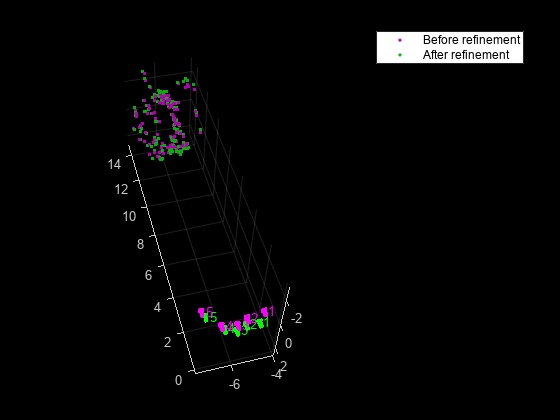bundleAdjustment
Adjust collection of 3-D points and camera poses
Syntax
Description
[
refines 3-D points and camera poses to minimize reprojection errors. The refinement
procedure is a variant of the Levenberg-Marquardt algorithm. The function uses the
same global reference coordinate system to return both the 3-D points and camera
poses.xyzRefinedPoints,refinedPoses]
= bundleAdjustment(xyzPoints,pointTracks,cameraPoses,intrinsics)
[
refines 3-D points from the world point set, wpSetRefined,vSetRefined,pointIndex] = bundleAdjustment(wpSet,vSet,viewIDs,intrinsics)wpSet, and refines
camera poses from the image view set, vSet.
viewIDs specify the camera poses in
vSet to refine.
[___,
returns the mean reprojection error for each 3-D world point, in addition to the
arguments from the previous syntax.reprojectionErrors]
= bundleAdjustment(___)
[___] = bundleAdjustment(___,
specifies options using one or more name-value arguments in addition to any
combination of arguments from previous syntaxes. For example,
Name=Value)MaxIterations=50 sets the number of iterations to
50. Unspecified arguments have default values.
Examples
Input Arguments
Name-Value Arguments
Output Arguments
References
[1]
[2]
[3]
Extended Capabilities
Version History
Introduced in R2016aSee Also
Functions
bundleAdjustmentMotion|bundleAdjustmentStructure|estrelpose|undistortImage|undistortPoints|cameraProjection|triangulateMultiview

